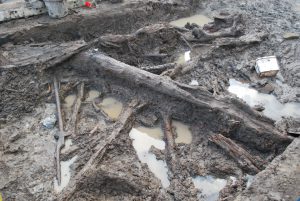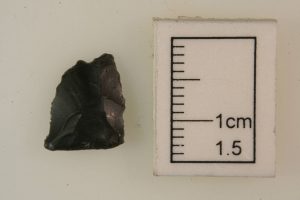Much of the lithic assemblage (stone tools) at Stainton West is representative of a classic Late Mesolithic narrow-blade microlithic assemblage, with a strong emphasis on blade technology, in core-reduction techniques, knapping products and finished tools. Microliths are small stone tools made by first flaking off a blade of material from a nodule, and then shaping this to form, what are usually, geometric pieces. The resultant pieces can be hafted and assembled into composite tools such as fishing hooks or projectiles. The microliths are the dominant tool type amongst the Mesolithic flint: approximately 5600 microliths have been classified. The types of microlith forms present are comparable to those recorded at other Late Mesolithic sites, such as Rum and Mount Sandal, although with relatively slightly higher numbers per form than at the two sites mentioned. Furthermore, there is much variation within the main classifications. For example, scalene triangles (numbering 1032) vary in their size, degree and positioning of retouch and form in plan across the group as a whole. Alongside the complete microliths, there is a significant number of microlith fragments (2034 in total). These fragments are important as they indicate that tools were being manufactured, used and discarded on the site.


